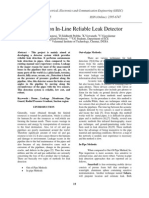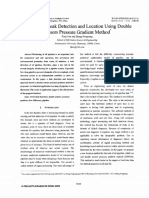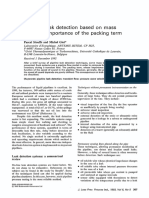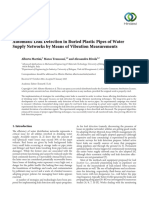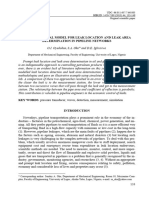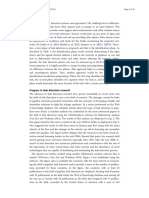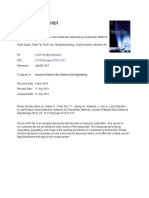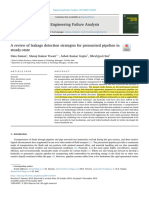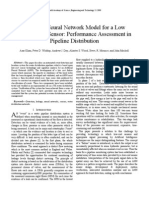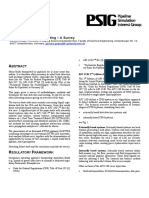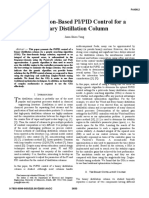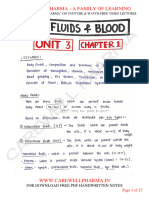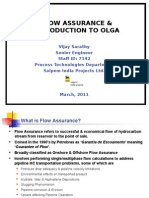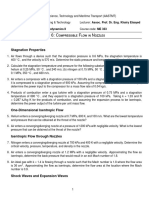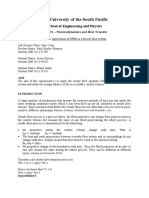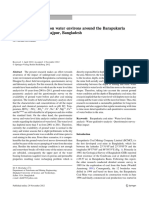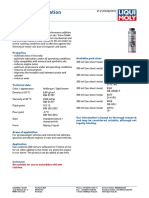0% found this document useful (0 votes)
115 views2 pagesPipeline Leak Detection Insights
This document discusses several methods for detecting leaks in pipes. It notes that low pressure air tests between 30-50 psi can be as effective as higher pressure water tests for finding leaks, as air is less viscous and has lower surface tension than water. Methods mentioned for leak detection include helium tracing, high pressure gases, and analyzing pressure and flow rates at the inlet and outlet of a pipeline. The research paper focuses on key variables for leak detection systems like minimum detectable leak rates, detection time, and accuracy of locating and estimating leak rates. It also lists assumptions that must be considered like fluid properties, load changes, temperature variations, and phase changes. For a half-inch leak hole, the minimum detection time is estimated to be
Uploaded by
Vardhan KaushikCopyright
© © All Rights Reserved
We take content rights seriously. If you suspect this is your content, claim it here.
Available Formats
Download as DOCX, PDF, TXT or read online on Scribd
0% found this document useful (0 votes)
115 views2 pagesPipeline Leak Detection Insights
This document discusses several methods for detecting leaks in pipes. It notes that low pressure air tests between 30-50 psi can be as effective as higher pressure water tests for finding leaks, as air is less viscous and has lower surface tension than water. Methods mentioned for leak detection include helium tracing, high pressure gases, and analyzing pressure and flow rates at the inlet and outlet of a pipeline. The research paper focuses on key variables for leak detection systems like minimum detectable leak rates, detection time, and accuracy of locating and estimating leak rates. It also lists assumptions that must be considered like fluid properties, load changes, temperature variations, and phase changes. For a half-inch leak hole, the minimum detection time is estimated to be
Uploaded by
Vardhan KaushikCopyright
© © All Rights Reserved
We take content rights seriously. If you suspect this is your content, claim it here.
Available Formats
Download as DOCX, PDF, TXT or read online on Scribd
/ 2
